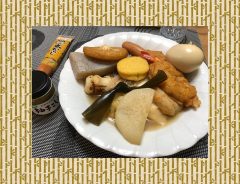Related Article
-

Harajuku Store Offers Poop Emoji Ice Cream Served In Miniature Japanese Style Toilets
-

Phoenix-Like Clouds Illuminate The Skies of Okinawa Before Daybreak
-

Oden, Japan’s winter comfort food: Our favorite five ingredients
-

Its flowers smell like rotting flesh and Japanese people eat this plant’s roots all year round
-

The Conbini Guide: Must Try Foods From Japanese Convenience Stores
-

Japanese oden restaurant comes up with ingenious design for its sink faucets



Emojis, the convenient pictograms populating cellphone and smartphone keyboards around the world, originated in Japan. Written 絵文字, emoji literally means "picture letter."
For example, here are some emojis for food and drinks:
Although emojis are used around the world, not all emojis are interpreted the same way in each country.
A good example of this was noted by social media influencer Artur Galata (@ArturGalata) a Latvian who loves Japanese culture and food, especially melon pan. On his Twitter account, where nearly 335,000 followers enjoy his almost exclusively Japanese posts, he recently mentioned a certain emoji and it garnered some attention.
According to Galata, non-Japanese people sometimes think of this emoji as "a weirdly shaped rocket spewing flames as it flies."
The emoji in question is...
...oden!
As some grape Japan readers may recall, おでん oden is one of Japan's favorite winter comfort foods. Many ingredients feature in oden but what they all have in common is that they are served in a light and flavorful broth, traditionally containing dashi and soy sauce. Typical favorites are daikon radish, various fishcakes, konjac, tofu, sausages, boiled eggs, and skewered meats.
Hykw-a4, CC BY-SA 3.0, via Wikimedia Commons
Since it's not as famous as sushi or tempura outside of Japan, it's only natural that many people who have never been to Japan wouldn't recognize it.
However, even though Galata knows oden and has tried it many times, he admits that he has never seen actual oden on a skewer looking like the one depicted in the emoji.
This combination of three oden ingredients on a skewer: a triangle of konjac, followed by daikon radish, ganmodoki (a fried tofu fritter made with vegetables, such as carrots, lotus roots, and burdock) or another round ingredient, and finally narutomaki, chikuwa (types of surimi fishcakes) or another cylindrical ingredient, may actually be served in some parts of Japan but it's not the most common form of oden that you're likely to find, especially if you buy it in convenience stores.
A comment on Galata's Tweet claims that the combination was popularized by an oden-loving character named チビ太 Chibita in Osomatsu-kun, a comedy manga by Fujio Akatsuka published from 1962 to 1969 and adapted into an anime in 1966 and 1988.
Perhaps as a result of this and the easily recognizable shapes, it has been adopted as a symbol of oden.
Konjac, daikon radish and chikuwa oden on a skewer. | crane lake / © PIXTA
People who saw the post made a variety of comments, such as:
So, did you think it was a rocket?
For those who love Japanese food and culture, it's surely gratifying to think that more people around the world may become interested in Japan thanks to a little emoji on their smartphone!